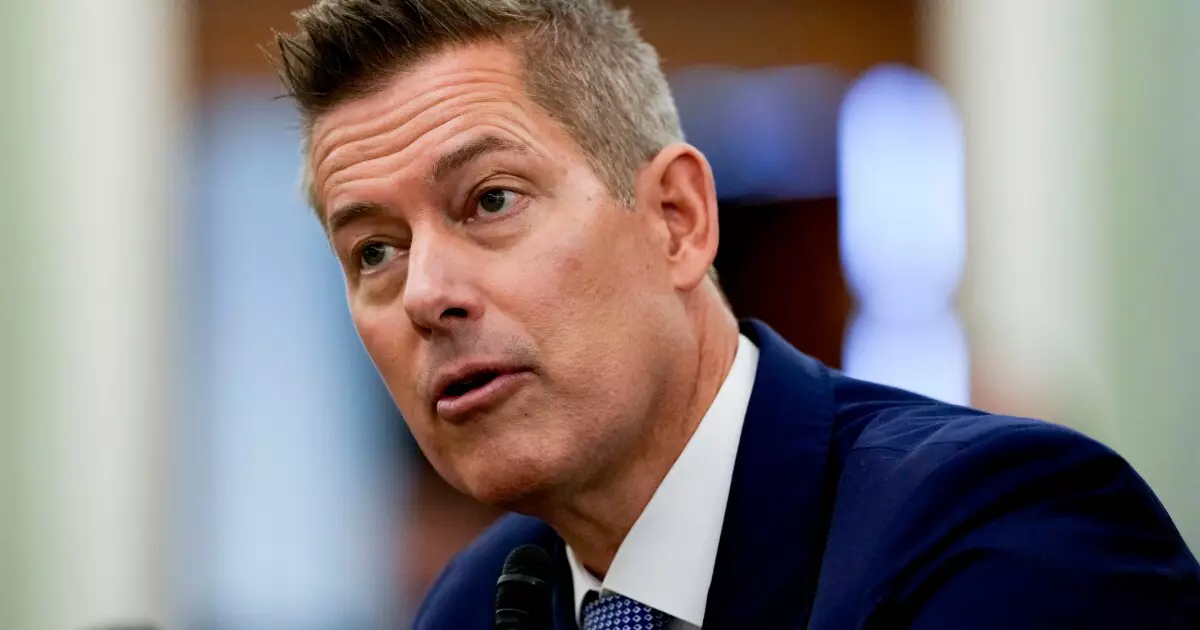In a daring move, the U.S. Department of Transportation (DOT) is shaking off the shackles of previous administrations’ overreaching environmental stipulations. Under the banner of President Trump’s administration, the DOT, led by Secretary Sean P. Duffy, is prioritizing straightforward infrastructure development over what has been deemed radical environmental agendas. The removal of two memos enacted during the Biden Administration—aimed at enforcing stricter greenhouse gas emissions protocols and inequity initiatives—underscores a radical pivot back to a pro-growth, pro-construction vision.
While some may label these changes as regressive, there’s a compelling argument to be made that unlimited strings attached to federal funding only stifle innovation and development. Instead of holding communities hostage under the guise of environmental responsibility, enabling states and localities to define their own infrastructure needs can, in fact, spur more responsible and pragmatic solutions. This is not merely an ideological win; it signifies the acceptance of a reality where infrastructure cannot thrive in a web of bureaucratic expectations.
Returning to Fundamentals: The Case for Formula Funding
The infrastructure dialogue has taken a clear turn toward formula funding, which generally offers a reliable, predictable revenue stream that states can count on. This development resonates with lawmakers in the center-right spectrum who understand the intricate relationship between sustainable infrastructure and economic growth. In a world where the Highway Trust Fund is under continuous pressure from stagnant gas tax revenues—failing to rise with inflation—it becomes essential to provide states with the autonomy to create a robust infrastructure landscape without unnecessary entanglements.
The American Association of State Highway and Transportation Officials (AASHTO) echoes this sentiment, reinforcing the time-tested principle that federal assistance should support local administration and decision-making. This rallying call marks an important moment in the history of U.S. infrastructure—one where states can allocate funds based on localized needs rather than a one-size-fits-all approach dictated from above.
The Dangers of Overregulation
Overregulation has often led to a stifling environment for innovation. As evident in the constraints of previous administrations’ policies, incorporating extensive requirements based on environmental criteria created an air of uncertainty for local departments and contractors alike. The desired outcome—a cleaner environment and equitable infrastructure—was often overshadowed by bureaucratic red tape that complicated project timelines and budgets.
Instead of unyieldingly imposing environmental expectations, a pragmatic approach recognizes that local stakeholders often have deeper insights into their communities’ needs. This flexible framework can lead to more effective solutions addressing legitimate environmental concerns while simultaneously advancing essential infrastructure development without causing costly delays.
Focusing on What Matters: Roads and Bridges
One of the most pronounced shifts in the current infrastructure narrative is the renewed focus on traditional forms of transport—specifically roads and bridges—over more abstract concepts like bike lanes. House Transportation and Infrastructure Committee Chair Sam Graves aptly highlights the shifting priorities within the transportation sector, making it abundantly clear that we must prioritize the problems we can concretely address.
With the current infrastructure needs continuing to grow, the conversation has evolved to one centered on efficiency and immediate utility, rather than ideological posturing. The move towards emphasizing traditional transport models comes as a welcome defection from what could be termed as a “green distraction”—policy changes that prioritize optics over effect.
Electric Vehicles and Revenue Shortfalls
Another critical issue looming in the background is the funding shortfall created by the increasing prevalence of electric vehicles, which contribute less or even nothing to the gas tax revenue that supports infrastructure projects. This gap is a ticking time bomb for funding stability moving forward. Senator Shelley Moore Capito has been vocal about the repercussions of ignoring traditional funding streams in favor of adventurous ventures into electric ecosystem policies.
It’s a pressing concern that policymakers must face—any inertia in addressing this financial imbalance could hamper efforts to sustain and improve the essential infrastructure our nation relies on. Rather than relying on complex discretionary grants, a focused return to formula funding provides a far clearer and more accountable path forward.
These developments indicate not just a policy gambit but a cultural shift within the infrastructure narrative. They reflect a larger movement towards sustainability—not just in terms of environmental responsibility, but in fostering economic stability through unfettered development.

